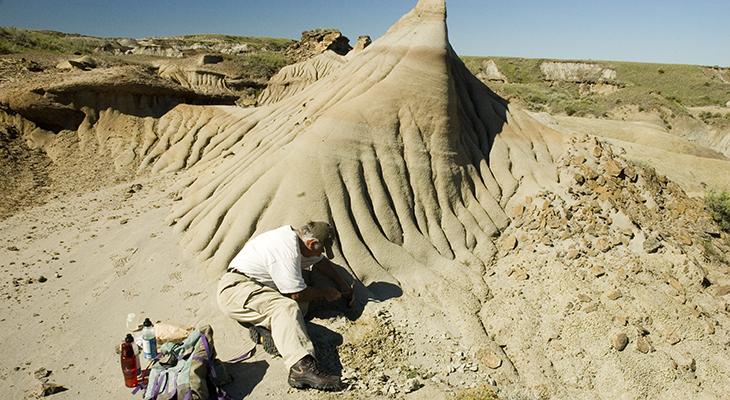In 1982, Donald (Don) Brinkman began working for the Royal Tyrrell Museum as Curator of Vertebrates. He was then Director of Preservation and Research for a decade, until his retirement in November 2018. Don continues to study how ancient animals lived in their environments during the Age of Dinosaurs, with a focus on turtles. By comparing turtle specimens from Asia and North America, he investigates why some species lived where they did, what unique traits helped them survive, and how environmental conditions affected them. This research allows Don to determine why some species survived catastrophic events, while others did not.
Research Interests
- How ancient animals, and turtles in particular, lived in their ancient environments.
- The effects of climate change on ancient communities.
- Palaeoecology and vertebrate distribution.
- Mesozoic turtles.
Professional Highlights
- Studied fossil turtles from the Mesozoic of China, providing new insights into patterns of interchange between Asia and North America.
- A new species of horned dinosaur, Coronosaurus brinkmani, was named for Don Brinkman in 2005.
Education
Ph.D., McGill University, 1979
B.Sc., University of Alberta, 1975

- Recent Publications
Vavrek, M. J. & Brinkman, D. B. (2018). The first record of a trionychid turtle (testudines: trionychidae) from the Cretaceous of the Pacific coast of North America. Vertebrate Anatomy Morphology Palaeontology, 5. http://dx.doi.org/10.18435/vamp29336
Mallon, J. C. & Brinkman, D. B. (2018). Basilemys morrinensis, a new species of nanhsiungchelyid turtle from the Horseshoe Canyon Formation (Upper Cretaceous) of Alberta, Canada. Journal of Vertebrate Paleontology, 38(2). http://doi.org/10.1080/02724634.2018.1431922
Murray, A. M., Zelenitsky, D. K., Brinkman, D. B. & Neuman, A. G. (2018). Two new Palaeocene osteoglossomorphs from Canada, with a reassessment of the relationships of the genus †Joffrichthys, and analysis of diversity from articulated versus microfossil material. Zoological Journal of the Linnean Society, 183(4), 907-944. https://doi.org/10.1093/zoolinnean/zlx100
Brinkman, D. B., Neuman, A. G. & Divay, J. D. (2017). Non-marine fishes from the Late Santonian Milk River Formation of Alberta, Canada – evidence from vertebrate microfossil localities. Vertebrate Anatomy Morphology and Paleontology, 3, 7-46.
Brinkman, D. B., Rabi, M. & Zhao, L. (2017). Lower Cretaceous fossils from China shed light on the ancestral body plan of crown softshell turtles (Trionychidae, Cryptodira). Scientific Reports, 7.
